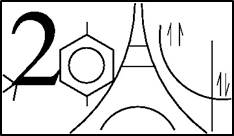Bio-organic molecule-inorganic surface interactions play an important role in medical and pharmacological applications. Solids like silica, might have been important in the origin of life on earth, but is also used as drug carrier; other solids of biological origin such as hydroxyapatite or calcium oxalates are directly involved in chemistry of “life”: Hydroxyapatite as the main compound of human bones and calcium oxalate as main compound of kidney stones.
We have performed DFT studies on different interfaces and investigated the interaction with a series of bio-organic molecules, such as glycine, benzoic acid, ibuprophene and Alendronate. Here we present the special case of the interaction of glycine with a representative model of amorphous silica surface.[1] Two types of surface sites are studied: silanols (SiOH) and silanolates (SiO-), with water co-adsorption. In addition, vibration frequencies and chemical shifts were compared to experimental data.
The adsorption is found exothermic on a silanol nest and on the silanolate group. Adsorption on silanols stabilizes the zwitterionic form of glycine, and adsorption on silanolate groups stabilizes the anionic glycinate. The presence of water does not modify the adsorption energy trend (SiO- being more exothermic than SiOH). This is explained by a strong electrostatic interaction between he charged SiO- and the NH3+ moiety, resulting in a spontaneous proton transfer.
The best agreement with experimental data is achieved when water is co-adsorbed with glycine. The IR stretch frequency and the NMR shifts calculated allows us to discriminate between both modes of adsorption.
References
[1] F. Tielens, C. Gervais, J.-F. Lambert, F. Mauri, D. Costa Chem. Mater. 20, 3336 (2008).
[2] N. Folliet, C. Gervais, D. Costa, G. Laurent, F. Babonneau, L. Stievano, J.-F. Lambert, F. Tielens, J. Phys. Chem. C, 117, 4104, (2013).
- Image

 PDF version
PDF version

